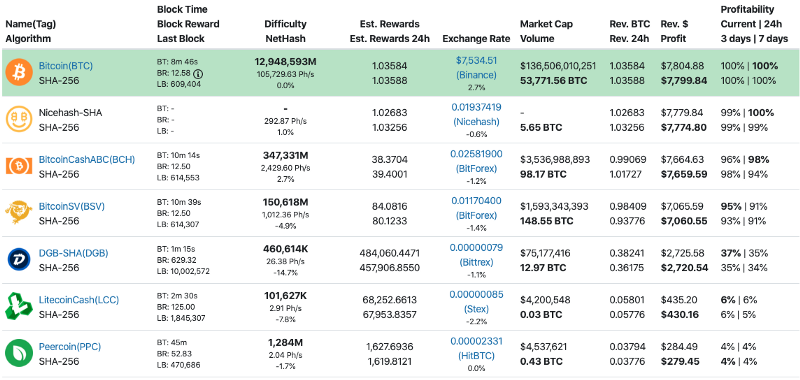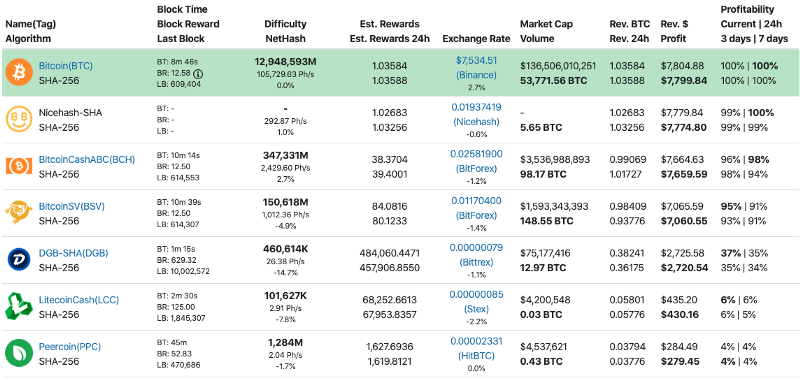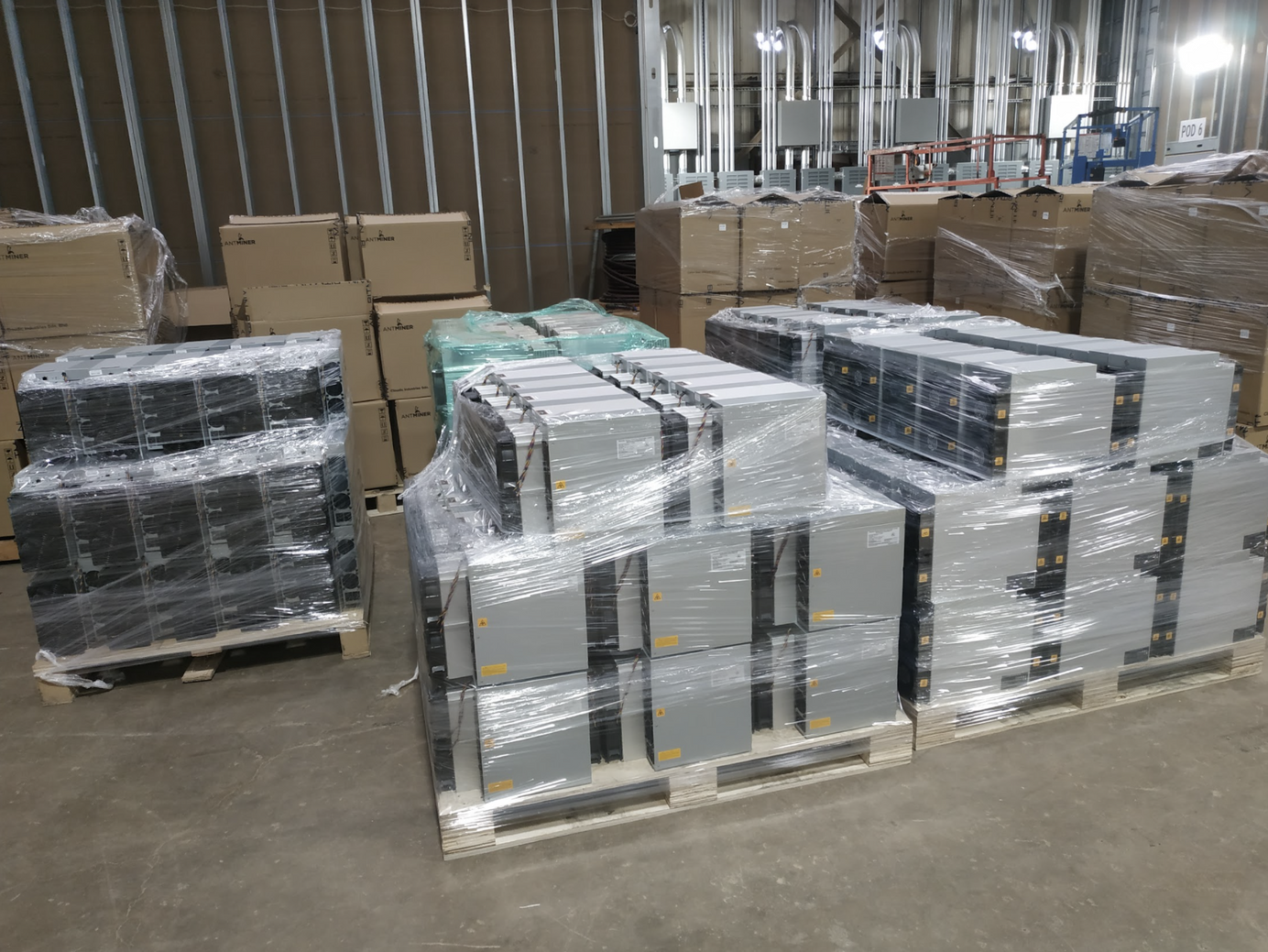
What is Profit Switching in Crypto Mining?
Cryptocurrency profit switching can be lucrative for cryptocurrency miners when executed correctly.
One of the new areas of interest in mining is profit switching. Effectively it is a way to maximize your rigs profitability by switching between coins to mine depending on whichever is the most profitable at a given point of time.
This guide will walk through some key terms, explain what profit switching is and layout our view on the future of profit switching.
We just launched our first profit switching algorithm for Equihash. Can check it out here.
Key Terms
Algorithm
Hashing Algorithms (“Algorithms”) are the backbone to any Proof-of-Work (PoW) coin. Hashing is a process of taking some information that is readable and turning it into something that is completely random. From a technical standpoint a hashing function is a cryptographic algorithm, the mathematical equations that map readable data of arbitrary size to a value (hash) of a fixed size.
Different hashing algorithms are used for different cryptos, including SHA-256, Equihash, Scrypt, X11, CuckooCycle, Lyra2REv2, Blake (14r) and Ethash.
You can build PoW coins using one of the algorithms. For example Equihash is the underlying algorithm to multiple coins such as ZCash, Horizen, Komodo, Pirate, ZClassic and more.
ASICs by nature are designed to only be able to solve one type of algorithm. So if you purchased a Antminer T17+ then it can only mine SHA-256 (i.e. BTC, BCH, BSV etc).
Miner Profitability
The most accurate way to calculate a miner’s profitability on a PPS pool varies per coin and uses some combination of network difficulty, bDiff, pool difficulty, block reward and hashrate.
However, conceptually you can think of long term mining reward as ((User Hashrate / Network Hashrate) _ (Block Reward _ Block Time) \* Coin Price).
Of these variables the Block Reward (excl. transaction fees) and Block Time are established values. The Network Hashrate and the Coin Price are variable factors and hard to predict.
At any given time the profitability between coins, even those built on the same algorithm, varies based on the continually changing variables mentioned above. For example today BTC may be more profitable to mine than BCH and BSV. But tomorrow BCH may be the most profitable and so forth.

What is Profit Switching?
Profit switching as a concept is to look at an algorithm (for example Equihash) and choose which coin is the most profitable to mine (i.e. ZEC, ZEN, KMD, ARRR, etc) based on current profitability.
From a technical standpoint it will be implemented either at the pool level or by a 3rd party application. At a pool level, the mining pool would automatically assign work to your machine and collect your equihash share. The pool would then submit the share to the most profitable equihash coin’s network. This way the miner is paid out for the share they submit, at a higher (or equal to) payout than a normal pool.
The Future of Profit Switching: Switching as a Service
Miners deserve full transparency from their pool operators. We think its unethical for pools to market their services as a solo pool (i.e. BTC) but then use a miners share to mine something else (i.e. BCH or BSV) without miners knowing it. Some miners are not completely profit driven and mine for a reason other than profitability (belief in a project).
Instead a pool should offer profit switching as a separate product where miners can opt-in as they choose (knowing that their hashrate can be directed to any coin the pool wants).
Predicting the Coin to Mine
Right now all existing services use a formula to decide which coin to mine. The formula is based on current profitability.
However, there is a large opportunity to increase profitability by implementing some algorithms that make predections on which coin will be the most profitable to mine. This would allow for a quicker switches which is especially important for coins with shorter block times and difficulty changes. In the future, some form of machine learning may also contribute to this.
Staying Nimble
In the hedge fund and asset management industry, fund managers usually cap the size of their fund. Even though they would make more money by managing a bigger fund they realize that operating a large fund may impact their ability to maximize returns. A couple reasons for this includes moving markets (i.e. if they invest too much then they could move the market) and not having the ability to liquidate quickly especially for smaller stocks. So if you are investing in good opportunities with lower volume, it is better to have a smaller fund.
We believe the same is true for profit switching. Larger profit switching pools will move the market (i.e. increase the difficulty) which will lead to lower profitability. In addition, they may have a harder time selling a smaller cap coin if the market is not very liquid. So larger pools will be forced to implement higher profitability switching thresholds in their algorithms (i.e. only switch between coins when they are 5% higher than the rest). Whereas smaller pools are more nimble and could switch at much lower rates (i.e. when a coin is 2% higher than the rest).
Hashrate Index Newsletter
Join the newsletter to receive the latest updates in your inbox.






